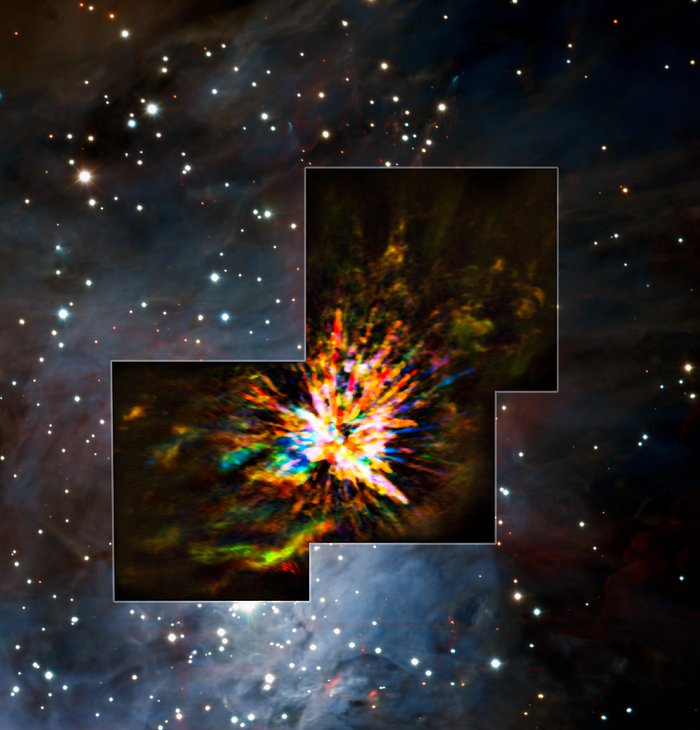ALMA and VLT views of an explosion in Orion
Stellar explosions are most often associated with supernovae, the spectacular deaths of stars. But new ALMA observations of the Orion Nebula complex provide insights into explosions at the other end of the stellar life cycle, star birth. Astronomers captured these dramatic images of the remains of a 500-year-old explosion as they explored the firework-like debris from the birth of a group of massive stars, demonstrating that star formation can be a violent and explosive process too.
The colours in the ALMA data represent the relative Doppler shifting of the millimetre-wavelength light emitted by carbon monoxide gas. The blue colour in the ALMA data represents gas approaching at the highest speeds; the red colour is from gas moving toward us more slowly.
The background is an infrared image from the HAWK-I camera on ESO's Very Large Telescope. The ALMA data only cover the region marked by the box.
Źródło:ALMA (ESO/NAOJ/NRAO), J. Bally/H. Drass et al.
O zdjęciu
| Identyfikator: | eso1711c |
| Typ: | Kolaż |
| Data publikacji: | 7 kwietnia 2017 15:00 |
| Powiązane komunikaty: | eso1711 |
| Rozmiar: | 2707 x 2824 px |
O obiekcie
| Typ: | Milky Way : Star : Circumstellar Material |
| Kategoria: | Stars |
Kolory i filtry
| Pasmo | Długość fali | Teleskop |
|---|---|---|
| Podczerwony Fe II | 1.64 μm | Gemini Observatory GSAOI |
| Podczerwony J | 1.25 μm | Very Large Telescope ISAAC |
| Podczerwony H | 1.65 μm | Very Large Telescope ISAAC |
| Podczerwony H2 | 2.12 μm | Gemini Observatory GSAOI |
| Podczerwony Ks | 2.2 μm | Very Large Telescope ISAAC |
| Milimetrowy 216-233 GHz | 1.3 mm | Atacama Large Millimeter/submillimeter Array Band 6 |
